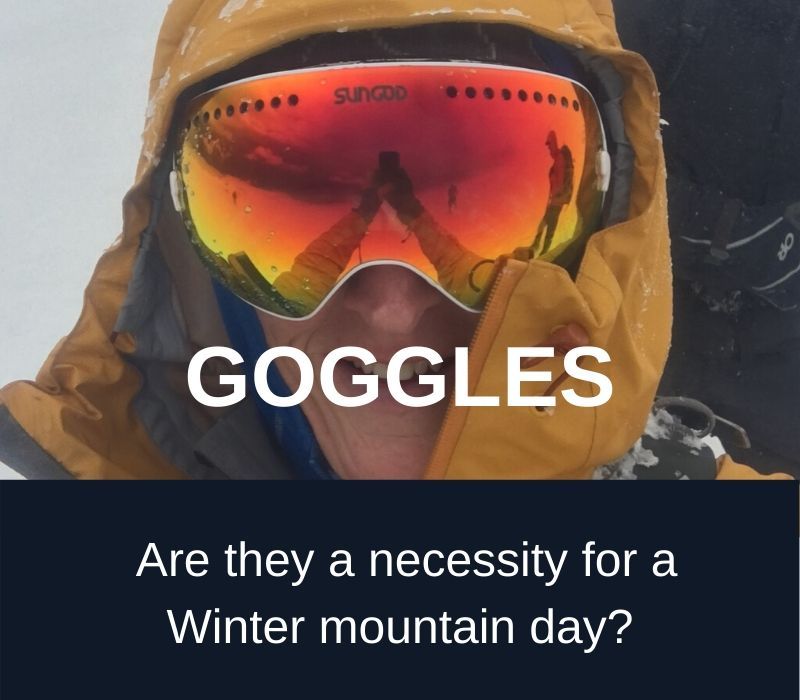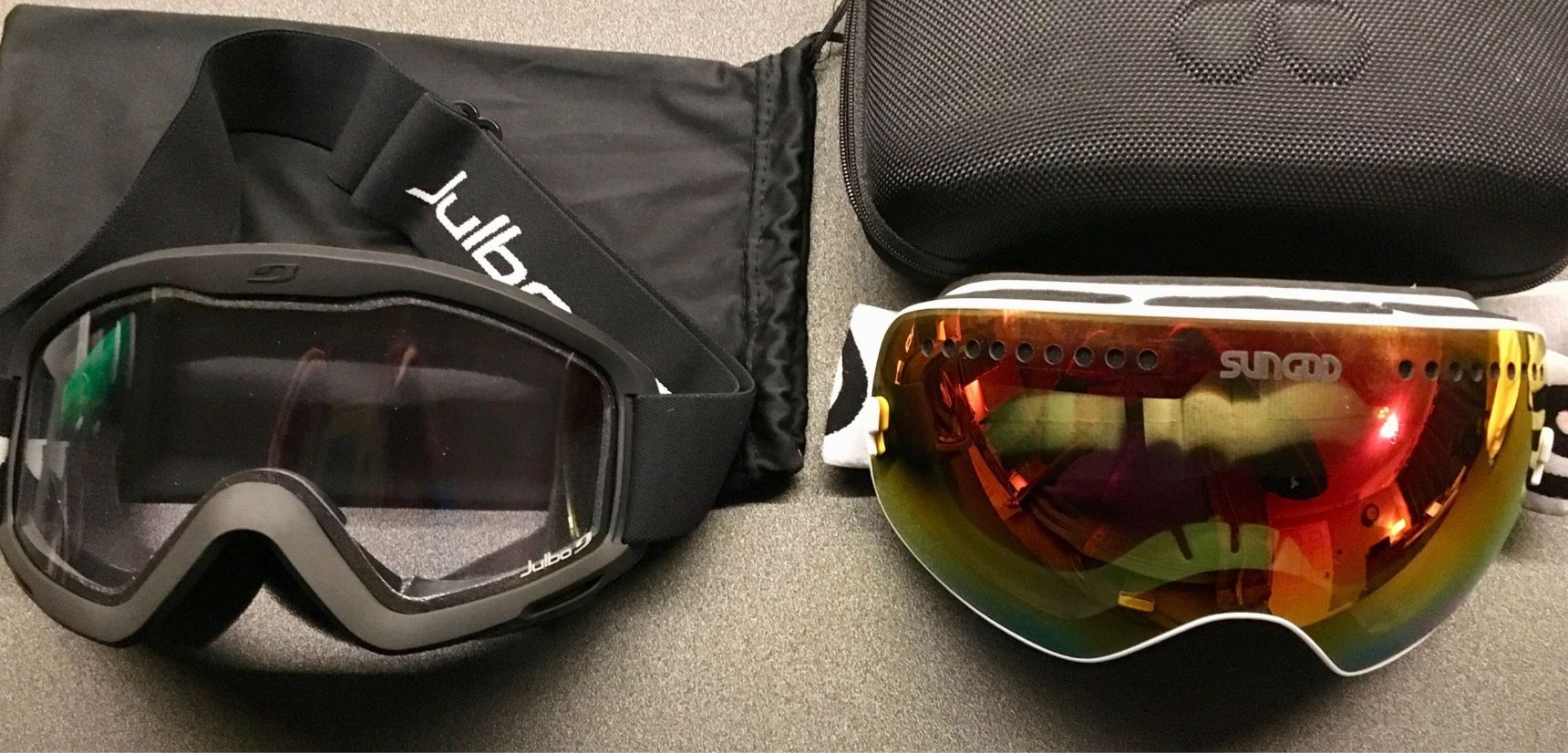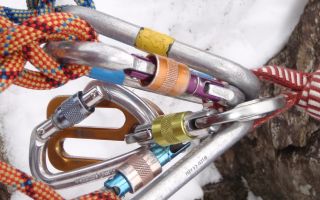Why goggles are a necessity for a winter mountain walk or winter mountaineering
Category: Advice & Guidance
Posted by The Adventure Element

There are certain items of kit we should always carry on winter mountain days, but hope that we never have to use. They take up room in our bags and make them heavier, but when we need them we're so glad we've made the effort to carry them. A first aid kit, an emergency shelter, multiple pairs of gloves, a fully charged phone and, of course, our goggles.
Winter mountain weather can be brutal and unpredictable. The cloud can suddenly descend leaving us potentially blind to any features and making navigation difficult. The wind can suddenly whip up, lifting ice particles and snow, thrashing them into our faces and making it difficuly, if not impossible to see. It is at these times when carrying a pair of ski goggles is essential - to keep ourselves safe and ensure we can leave the mountain safely.
Goggles ON - Think clearly
When conditions deteriorate we can feel levels of pressure and stress increase. Things can quickly feel like they are becoming out of control. Being panicked in these situations means we will be more likely to make quick and rash judgements and decisions.
Take a moment to stop and think. In that moment in time, are you in direct and imminent danger? Could you be in danger if you move any further without thinking clearly and making a plan?
It is amazing what a pair of goggles can do. As soon as you lower them down over your eyes they help block out the chaotic weather. Feeling more relaxed and in control, you're able to make better judgements and create a proper plan.
Goggles ON - Be a super-hero.
Walking or mountaineering in the winter mountains can sometimes feel like a battle of attrition against the weather. On others, when the sun is shining, it can be an absolute dream. When the weather is brutal, it can make you feel weak against its punishing attack. Why make it even harder for yourself? Cocooned in your goggles, you instantly feel more comfortable and stronger. In your own world, inside your hood, warm layers and goggles, you can be a super-hero battling against the mighty elements!
Goggles ON - Things become visible.
Have you ever tried taking and walking on a compass bearing with your eyes closed? You're right, it's impossible! The last situation you want to find yourself in is not being able to navigate to safety.
When in cloud and the light is flat it's hard to see the contours in the ground or the edges of cliffs. This is known as the 'White Room'. Being in the 'White Room' can be very disorientating as it's hard to differentiate between the ground and the sky. With a coloured orange or yellow lens in your goggles, it is possible to see the undulations in the ground again. The edges of cliffs or cornices become almost visible again, meaning you can make a safer route choice.

Clear lens or coloured?
This is matter of personal preference and may depend on the situation or conditions. Whilst a coloured lens will help you see the undulations in the ground, and help protect your eyes from the sun's glare, a clear lens will make it easier to see the contours on your map and are better if you have to navigate at night - a potential situation in the winter mountains due to lack of daylight hours.
If your budget can afford it, consider a photochromic lens. These lenses darken or lighten depending on the surrounding levels of sun light. Even on a cloudy day, if the light is bright its glare can make you squint and hurt your eyes. Having eye protection is real bonus.
Don't get fogged-up!
You certainly get what you pay for when it comes to buying goggles. Whatever you decide to buy, ensure they are 'anti-fog' ('fogging' occurs when moisture from your breath or sweat mists up the lenses in cold weather). If they do 'fog', or mist up, this will block your vision and make the goggles almost useless. If the temperatures are below freezing, the moisture can freeze inside your goggle. No amount of trying to warm them or dry them will fix the problem while you are on the hill. You will be back at square one in a situation which the goggles were supposed to get you out of.
Get the best for your money.
- Visit a shop that has lots of choice.
- Try as many pairs on as possible, including the expensive ones!
- Check them for size, fit and comfort, as well as vision. You want them to feel comfortably close around your face, to keep the elements out.
- Pull something around your mouth and nose (as you may do on a cold winters day) and continue to breath to see if the goggle will fog up. If it does, how quickly does it clear?
- If you plan to use your goggles with a helmet, ideally take your's with you when you shop, to check the fit around it. If there any gaps around the goggles this could be a problem with wind / snow getting in.
- Check the build quality. The last thing you want is the lens falling out of the frame while you are trying to use them in anger.
- Do they have a protective bag or box? You'll want to protect your goggles from breaking or scratches whilst they are in your bag. A protective box is good but takes up extra room in your bag. Equally, if the goggles are in a bag they can be stowed in your climbing helmet for protection.
- If you decide on coloured lenses, grab a map and check how visible the contours are.
In the UK, the weather is not always calm and clear - we only wish it was! Understandably in our Winter Skills Course kit list, goggles are an 'essential' item. Being forever hopeful, we have also included sun cream and sun glasses!
For full details of our Winter Skills Courses along with dates and prices please click on the link: Winter Skills Course
We use 2 different goggles in the winter mountains. Having coloured lenses and a pair of clear lenses gives us the choice depending on type of planned activity and the potential conditions for the day.

